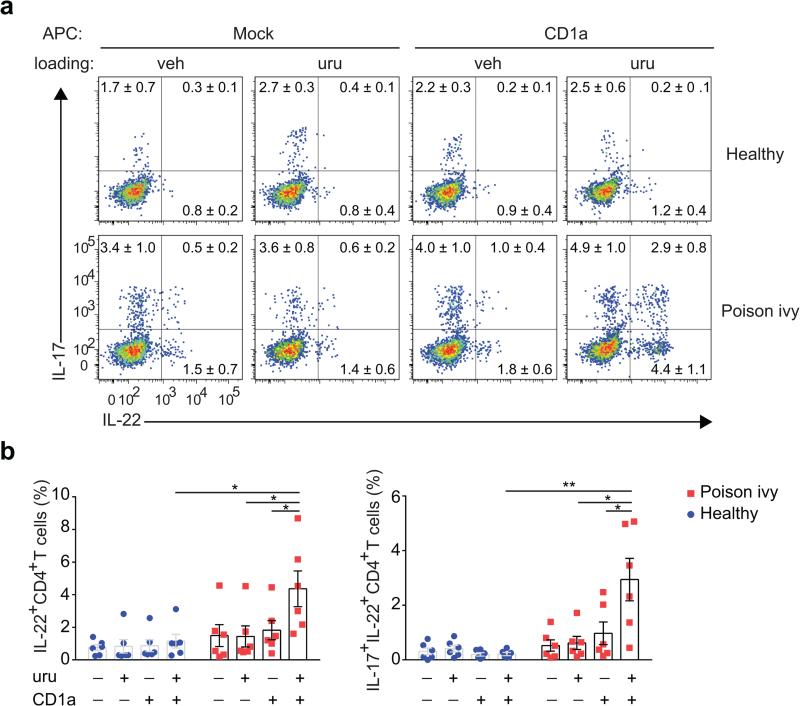Figure 2.
Human subjects with poison ivy dermatitis show urushiol-specific T cell responses mediated by CD1a. (a,b) Flow cytometry analysis of CD45RO+ memory T cells sorted from the peripheral blood of donors (n = 6) who experienced contact dermatitis caused by poison ivy within the last 6 months or healthy control donors (n = 6) and cocultured with urushiol (C15:2)- or vehicle-loaded CD1a- or mock-transfected K562 cells for 3 days. (a) Numbers indicate frequencies of IL-17- and IL-22-producing CD4+ cells among TCRβ+ cells (mean ± s.e.m.). (b) Quantification of percentage of IL-22+ and IL-17A+IL-22+ cells among CD4+ T cells. Each symbol represents an individual subject (b). Data shown are the mean ± s.e.m. * P < 0.05, ** P < 0.01; NS, not significant, using Wilcoxon test.

